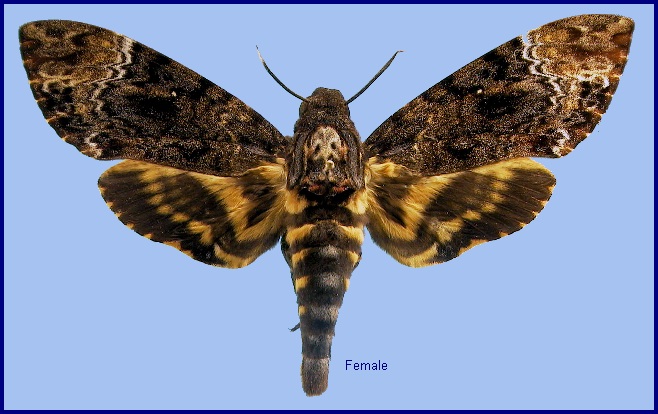
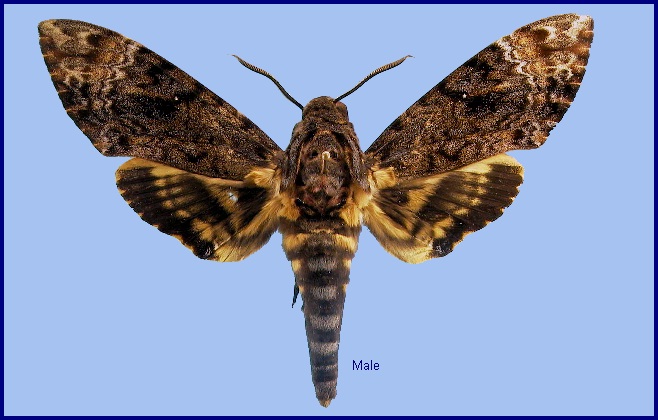
Sphinx lachesis Fabricius, 1798, Suppl. Ent. Syst.: 434. Type locality: "India orientali".
Synonym. Sphinx lachesis Fabricius, 1798.
Synonym. Acherontia morta Hübner, 1819.
Synonym. Spectrum charon Billberg, 1820.
Synonym. Acherontia satanas Boisduval, 1836.
Synonym. Acherontia lethe Westwood, 1847.
Synonym. Acherontia circe Moore, 1858.
Synonym. Manduca lachesis atra Huwe, 1895.
Synonym. Acherontia sojejimae Matsumura, 1908.
Synonym. Acherontia lachesis radiata Niepelt, 1931.
Synonym. Acherontia lachesis pallida Dupont, 1941.
Synonym. Acherontia lachesis submarginalis Dupont, 1941.
Synonym. Acherontia lachesis fuscapex Bryk, 1944.
Synonym. Acherontia lachesis diehli Eitschberger, 2003.
[Further details on this species in Japan, as well as photos of many stages, can be found on Digital Moths of Japan as well as Moths of the southern Shikoku, Japan.]
Wingspan: 100--132mm. Forewing upperside with discal spot small and white, contiguous with a black patch in the apex of the discal cell; the line proximal to the black patch in the apex of the discal cell forms a ring-like pattern near the hind margin with one of the discal lines, being joined to it posteriorly to vein 1A+2A. Hindwing upperside differs from the other members of the genus by having a large black patch in the basal half. The amount of black on abdomen and wings variable, generally more extensive on the abdomen in the male than in the female. Antenna longer than in Acherontia atropos, as stout in the male, but noticeably thinner in the female; white scaling more extensive than in Acherontia atropos. Thorax upperside with metanotum and end of mesonotum marked with red hairs; some red hairs usually also present at edge of skull-like mark. Palpi widely separated apically. First foretarsal segment with numerous spines on the outer side.
In the male genitalia, harpe with two parallel hooks, with the sinus between them rounded in dorsal view. In the female genitalia, ostium bursa with a proximal transverse ridge or flap, rounded laterally and shallowly sinuate mesially.
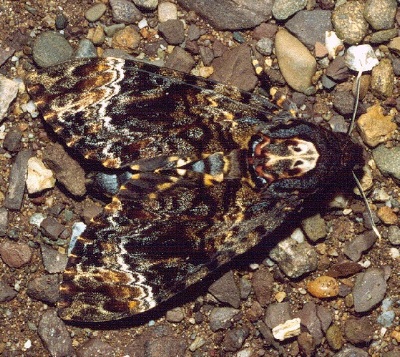
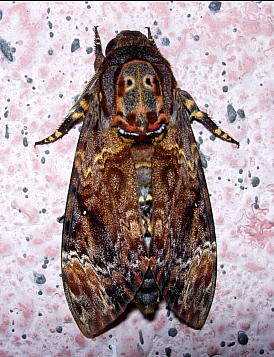
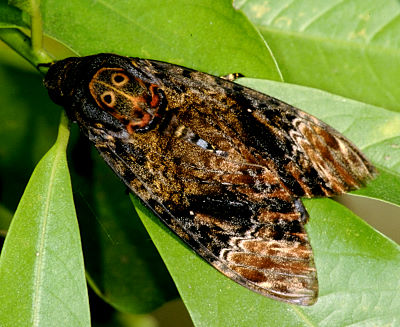
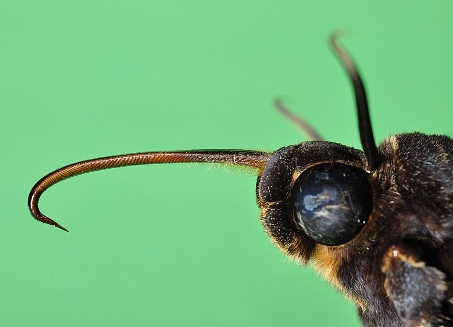
The moth rests with the wings folded penthouse-wise, covering the abdomen completely. When disturbed it raises the body from the surface on which it is sitting, at the same time partially opening and raising the wings, and emitting a squealing note. Mell states that this moth enters bee-hives to steal the honey, as in the case of Acherontia atropos. It comes to light freely (Bell & Scott, 1937).
China: 13.iii (Yunnan); v-vi (Guangdong); vi (Hong Kong; Sichuan; Yunnan; Zhejiang; Hainan; Jilin); vi-vii (Henan; Guizhou); vii (Shanghai; Xizang/Tibet); viii (Jiangxi; Fujian; Guangdong; Anhui); ix (Shaanxi). Taiwan: iv-v (Kaohsiung Hsien); vi (Hualien Hsien). Japan: 8.vi (Shikoku); 2-3.ix (Kyushu); 8.ix (Shikoku). Russia: 2.viii-7.ix (Primorskiy Krai).
Kendrick (2002) states that it is multivoltine in Hong Kong, occurring from March until October, with peaks in April, late July and late August.
OVUM: Eggs laid singly on the underside of leaves of a great variety of hostplants belonging to the families Solanaceae, Verbenaceae, Fabaceae, Oleaceae, Bignoniaceae, Labiatae, etc. (Bell & Scott, 1937).
LARVA: Full-fed 95--125mm long, 15mm wide. Trichromatic, with green, yellow and brownish grey forms, the grey being the most common.
According to Bell & Scott (1937), in first instar, head and body pale yellow, horn black, long, straight, bifid. In the succeeding instars, head and body green, horn green. With growth, pale yellow oblique body stripes develop, as do pointed tubercles; the latter disappear in the fourth instar. A grey and a canary-yellow as well as the green form may appear in the third instar.
In the fifth instar, the head has a shiny surface covered sparsely with small, glassy tubercles, surrounded by groups of minute tubercles. It is broadly semi-elliptical with a flattened vertex; true clypeus about one-third length of head, basal angles broadly rounded; apex of false clypeus rounded, reaching to one-half length of head; labrum broader than clypeus, narrowing frontad to half the breadth of its base; ligula kidney-shaped. Eyes 1-4 equidistant, in a gentle curve, 6 in line with 3 and 4 and twice as far from 4 as 4 is from 3; 5 at right angles to the line 3, 4, 6, and about as far from 4 as 4 is from 6. Body tapering slightly frontad from segment 7; each secondary ring on 2-4 raised into a sharp ridge in the dorsal area, the anterior ring of 3 higher than the rest. Surface dull and smooth. Horn long, stout at base, tapering first gently, then more strongly, to a sharp point, basal half curved downwards and distal half strongly upwards, sometimes forming a complete ring; surface shiny and thickly set with large, conical tubercles.
In the brownish grey form the head is black or dark brown with a paler brown or white subdorsal stripe, and a similar stripe separating the face from the cheek, the two stripes meeting near vertex. There is a white dorsal stripe from vertex to apex of clypeus, thence running down each side of clypeus; clypeus white with black edges; labrum and ligula whitish; antennal basal segment white with the outer sides black, second segment brown, end segment pale pink; mandible shiny black. Body brownish grey or greenish grey, each hair rising from a dusky-coloured dot ringed with yellowish; a narrow, pure white dorsal stripe, a broad black subdorsal stripe and a broader white lateral stripe on segments 2-4, the subdorsal stripe crossed by a narrow white transverse stripe at the junctions of the secondary rings, all these stripes very sharply defined; a greyish-green saddle-shaped marking on 2, below the subdorsal stripe; seven whitish oblique stripes, edged above with purple on 5-11, that on 11 running across 12 to base of horn, the others are confined to one segment each. Horn of the body colour, true legs shiny black, prolegs smoky black, the feet with long black hooklets; clasper of the body colour, with a black triangular-shaped mark at the upper edge. Spiracles broadly oval velvet black with the upper and lower edges tipped with yellow (Bell & Scott, 1937).
In the green form the head is green with a broad, shiny black stripe down the cheek; body grass-green tinged with yellow and sparsely dotted with dark-green on the dorsum of segments 5-11; oblique stripes yellow edged above with broad purple; horn green with the tubercles paler green, prolegs and claspers green.
In the yellow form the head and body are bright canary-yellow with markings as in the green form.
The young larva eats the egg-shell after hatching and rests on the midrib or on a vein on the underside of a leaf. It usually eats the cast skin after moulting, rests in the typical 'Sphinx' attitude, and when molested throws the head and anterior segments of the body from side to side, at the same time making a rapidly repeated clicking noise, which appears to be produced by the mandibles. When ready to pupate it stops feeding for some days, and the dorsum becomes suffused with purplish (in the green form) or brown (in the brownish grey and yellow forms). It then leaves the hostplant and hurries along the ground in search of a suitable place to burrow in the earth, moving with a quick undulatory motion. The prolegs and claspers lose most of their grasping powers during this period. On finding a suitable place it pushes its head into the earth, buries itself in a few minutes, and makes an ovoid cell about 150mm under the surface of about 80 x 40mm, the inside smooth but not lined with silk (Bell & Scott, 1937).
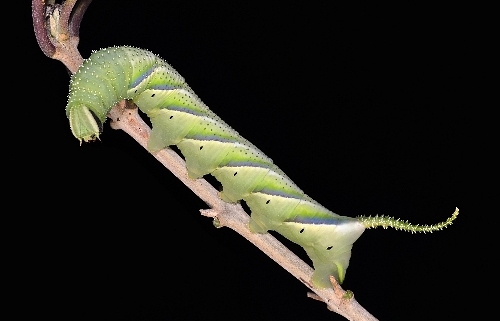
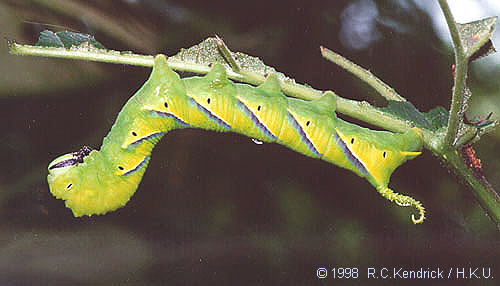
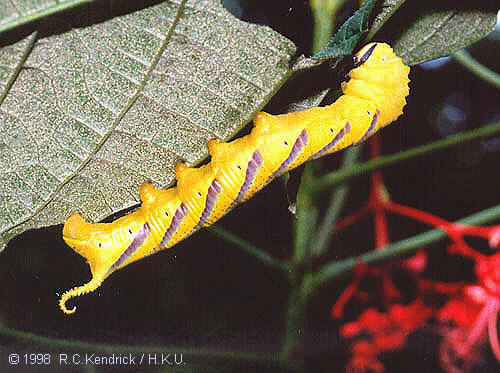
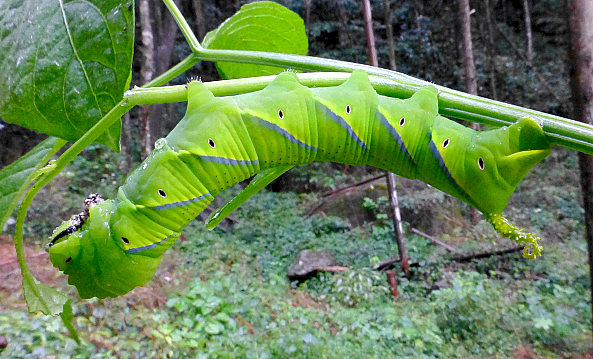
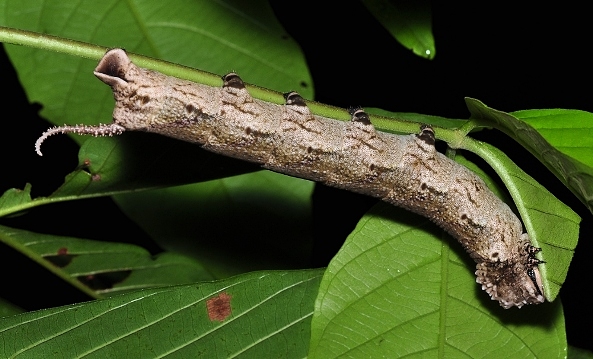
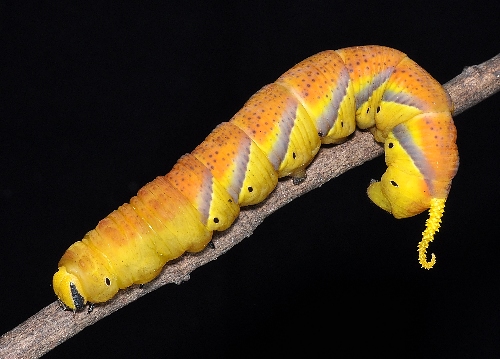
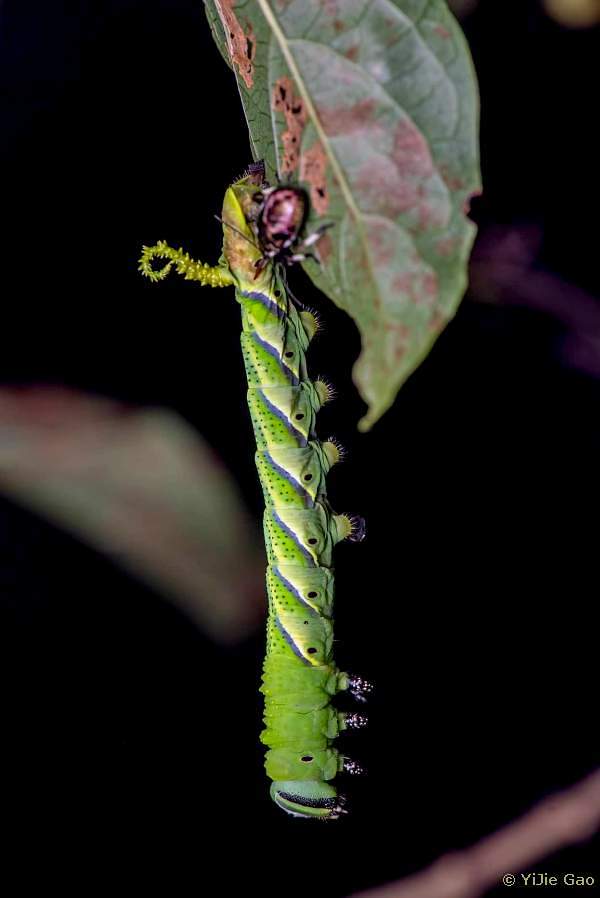
PUPA: 57--87mm long, 14mm wide. Colour deep chestnut, dorsum of segments 4-6 and cremaster nearly black; spiracles black. Stout in build, head broadly rounded; antenna shorter than fore leg; surface: smooth and shiny; base of tongue prominently raised, with a series of 12 short transverse ridges on each side resembling the teeth of a coarse file; sculpturing on segment 4 consisting of a raised, pear-shaped area on each side of the dorsal line the broad end laterad, the surface concave and dull and edged anteriorly sharp ridge; five well developed, parallel, antespiracular ridges on 9-11, the longest just in front of the spiracle and the others decreasing in length frontad. Spiracle of 2 covered by a transverse oblong lobe extending from the front margin of 3; remaining spiracles oval, the surface rising inwards to a more narrow oval containing the central slit, which has narrow, raised edges. Cremaster broadly triangular, the dorsal surface coarsely, longitudinally rugose, the tip ending, in two short teeth, each bearing a bristle (Bell & Scott, 1937).
The pupa is rather sluggish.
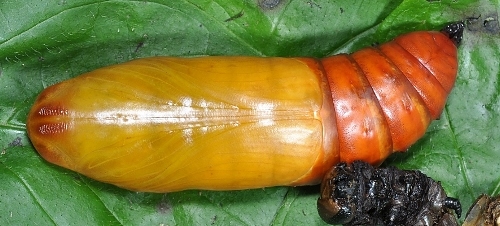
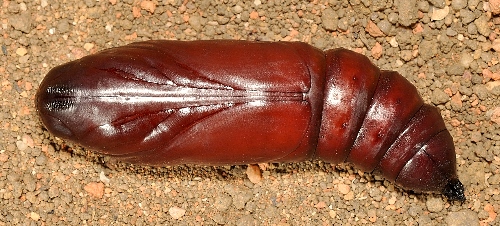
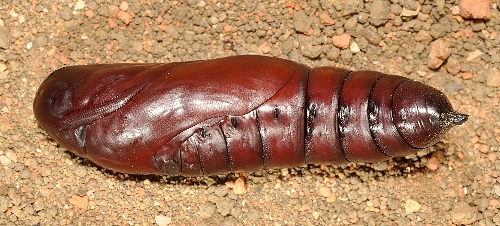
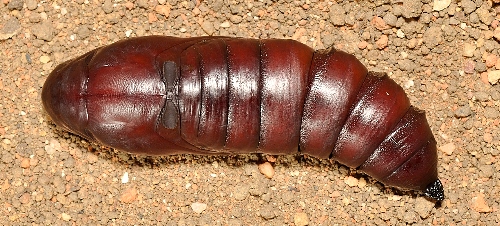
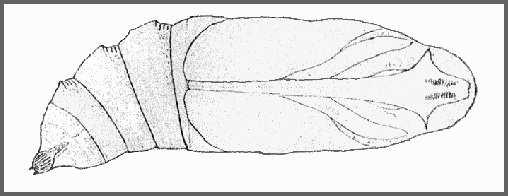
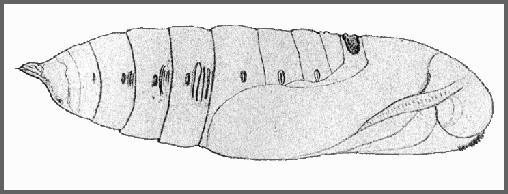
Larval hostplants. In India on Erythrina, Jasminum, Solanum tuberosum, Nicotiana tabacum, Tectona grandis, Datura and other plants (Scott, F. B., 1941).
In Hong Kong mainly on Ipomoea batatas, Clerodendrum kaempferi (Kendrick, 2002) and Erythrina speciosa (David L. Mohn, pers. comm. 2005).
In Taiwan, recorded from Aster taiwanensis, Brugmansia suaveolens, Buddleja asiatica, Cajanus cajan, Callicarpa formosana, Clerodendrum canescens, Clerodendrum cyrtophyllum, Clerodendrum japonicum [syn. Clerodendrum kaempferi (Jacq.) Siebold ex Hassk.], Coffea arabica, Cordia dichotoma, Lablab purpureus, Duranta erecta [syn. Duranta repens], Ehretia dicksonii, Ehretia resinosa, Erythrina crista-galli, Gardenia jasminoides, Hibiscus taiwanensis, Hygrophila pogonocalyx, Hygrophila ringens var. ringens [syn. Hygrophila lancea], Ipomoea cairica, Ipomoea indica, Lantana camara, Lycianthes biflora, Mikania micrantha, Mussaenda parviflora, Mussaenda pubescens, Paulownia fortunei, Perilla frutescens, Premna serratifolia, Prunus campanulata, Psophocarpus tetragonolobus, Radermachera sinica, Ruellia simplex [syn. Ruellia brittoniana], Sesamum indicum, Solanum diphyllum, Solanum melongena, Solanum tuberosum, Spathodea campanulata, Stachytarpheta jamaicensis, Stachytarpheta urticifolia, Strobilanthes formosanus, Tetrapanax papyrifer, Tithonia diversifolia and Volkameria inermis [syn. Clerodendrum inerme].
In Laos and Thailand, recorded from Clerodendrum quadriloculare, Lantana camara, Sesamum indicum, Solanum melongena, Solanum verbascifolium and Tectona grandis (Eitschberger & Ihle, 2008; 2010).
In Singapore, recorded from Stachytarpheta indica, Solanum torvum, Spathodea campanulata, Vitex pinnata and Clerodendrum inerme (Leong, 2011; Leong & D'Rozario, 2011).
In Metro-Manila, the Philippines, common in damper, less urban areas on the African ornamental tree Spathodea campanulata, particularly on saplings. Unlike Psilogramma menophron, rarely on mature trees (Dvořák, 2014).
In 2012 a larva was found on Tithonia diversifolia (Asteraceae) in Yunnan, China (John Horstman, pers. comm. 2013).
Ichneumonidae: Amblyjoppa cognatoria (Smith, 1874), Quandrus pepsoides (Smith, 1852). Tachinidae: Drino (Zygobothria) atropivora (Robineau-Desvoidy, 1830).
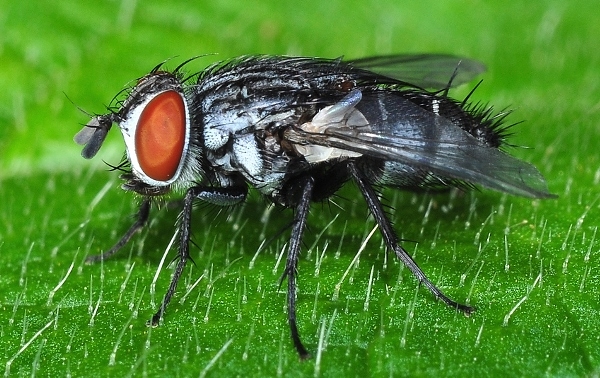
China: Jilin (Jiaohe, Lafa Shan); Hebei; Beijing; Shandong; Shaanxi (Xunyang, 1380m); Henan (Luoshan, 350m); Jiangsu; Anhui (Mt. Huang Shan); Shanghai (Jiading, 330m); Zhejiang (Lüsi; Tianmu Shan; Kuocang Mountain Nature Reserve); Hubei (Xuan'en, 1650m; Hefeng, 800-1100m); Sichuan (Emei Shan, 1200m; Baoxing; Xiaolou; Kangding; Dadu He); Chongqing (Fengjie); Yunnan (Mengzi; Yanmen; Laojun Shan, 2579m; nr. Yingjiang, 2080m; nr. Lüchun, 1900m; Gaoligong Shan; Simao/Pu'er; Malipo County, Wenshan Zhuang and Miao Autonomous Prefecture, 1860m; Puxiongxiang, Jianshui County); south Xizang/Tibet (Zhangmu, 2200m; Xiachayu, Zayu County); Guizhou (Shiqian, 700m); Hunan (Nanyue District); Jiangxi (Jiujiang; Tiancun, nr. Xingguo); Fujian (Fuzhou; Liufang; Guangze, 1200m; Longqi Shan); Guangdong (Guangzhou); Macau; Hong Kong (North Point); Guangxi; Hainan (Duowen Ling, nr Lingao).
Taiwan: Hualien Hsien (Taroko National Park, 2000m); Kaohsiung Hsien (Shanping, 640m); Taipei Hsien (Fushan); Taipei (Yangmingshan; Neihu); Nantou Hsien (Renluen, 1400m; Tatajia, 2610m; Dongpu Lodge, 2600m); Taoyuan Hsien; Taichung Hsien; Pintung Hsien; Yilan Hsien; Chiayi Hsien.
Japan: Shikoku (Kochi; Ochi); Kyushu (Kagoshima; Setta; Hikosan); Ryukyu Archipelago (Okinawa); Honshu (Kanagawa Prefecture; Tochigi Prefecture).
Russia: Primorskiy Krai (Primorskiy).
From northern and eastern Pakistan (Rafi et al., 2014; Haxaire, Gujjar & Saeed, 2017) east through India (Chandra, Pandey, Bhandari & Sambath, 2013; Pathania, Sunita Sharma & Gill, 2014; Subhasish Arandhara, 2016), Sri Lanka, Chagos Archipelago (Fletcher, 1910), Nepal, Bhutan (Irungbam & Irungbam, 2019) and China to southern Japan, then southeast through Burma/Myanmar, Great Nicobar Island (Singh, Ahmad & Chandra, 2021), Thailand, Laos, Vietnam (Le & Vu, 2024), Malaysia, the Philippines and Indonesia to Papua New Guinea.
Until the 1980s the distribution of this species in Japan was restricted to the island of Kyushu. Since then it has spread northeastwards. It was first recorded in Tochigi Prefecture (Honshu) in 2010 (Imai, 2012).
It has also recently become established on the Hawaiian Islands.
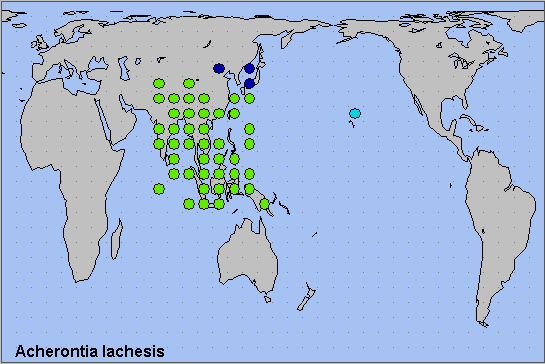
 Return to Sphingidae of the Eastern Palaearctic species list
Return to Sphingidae of the Eastern Palaearctic species list